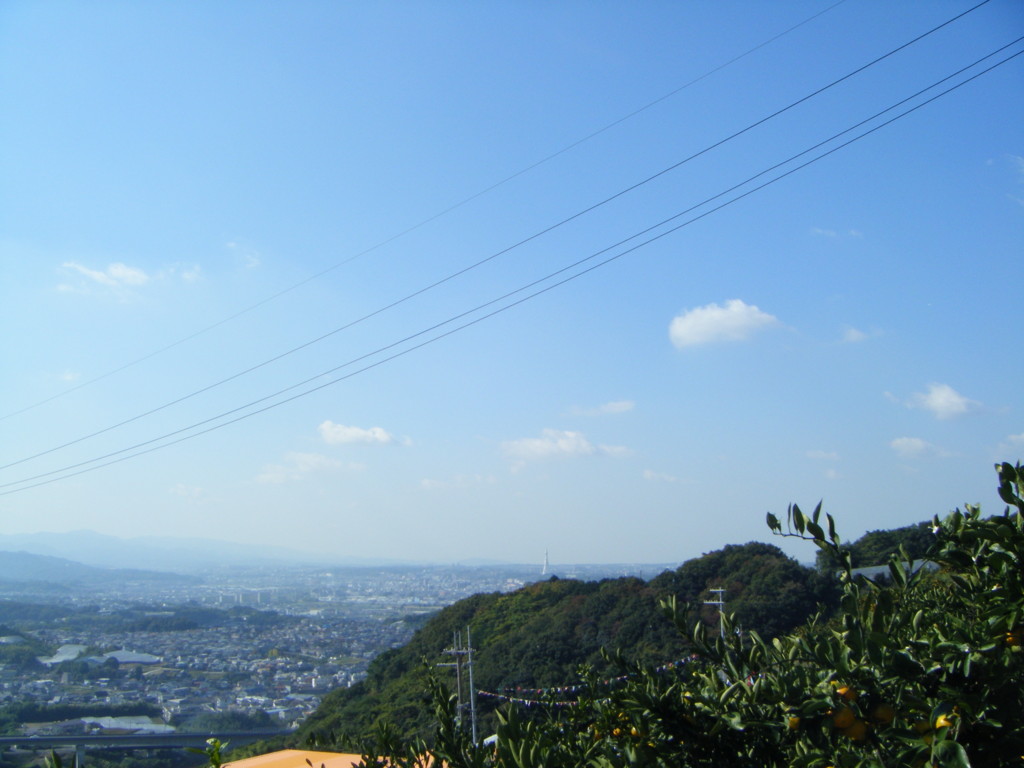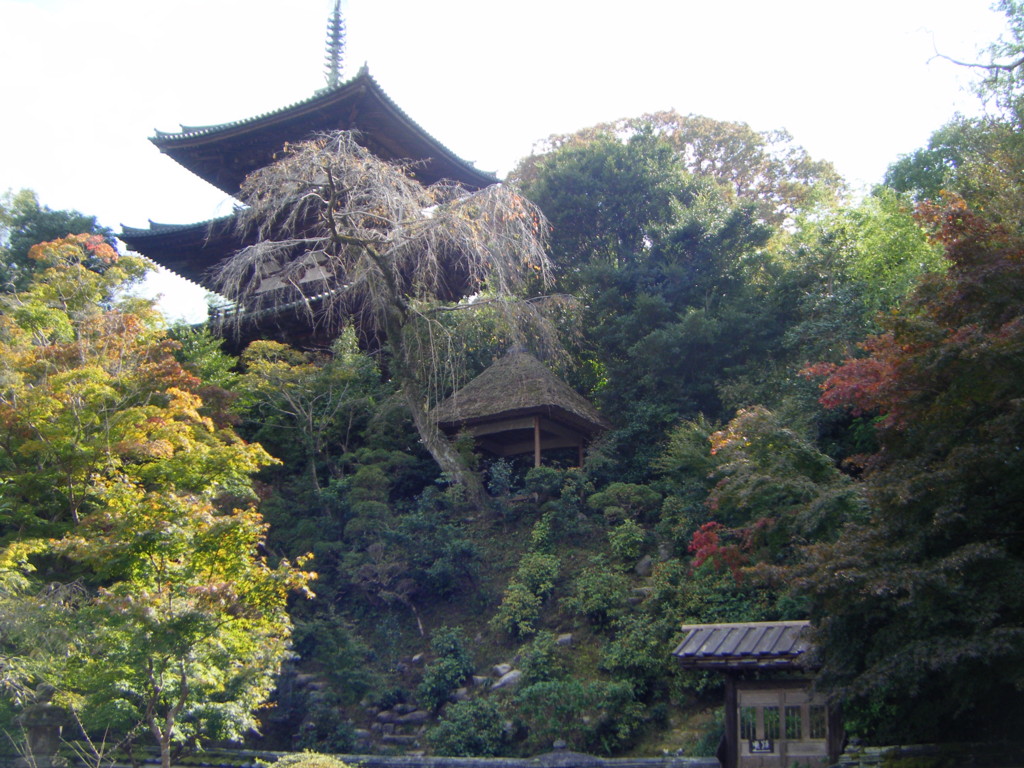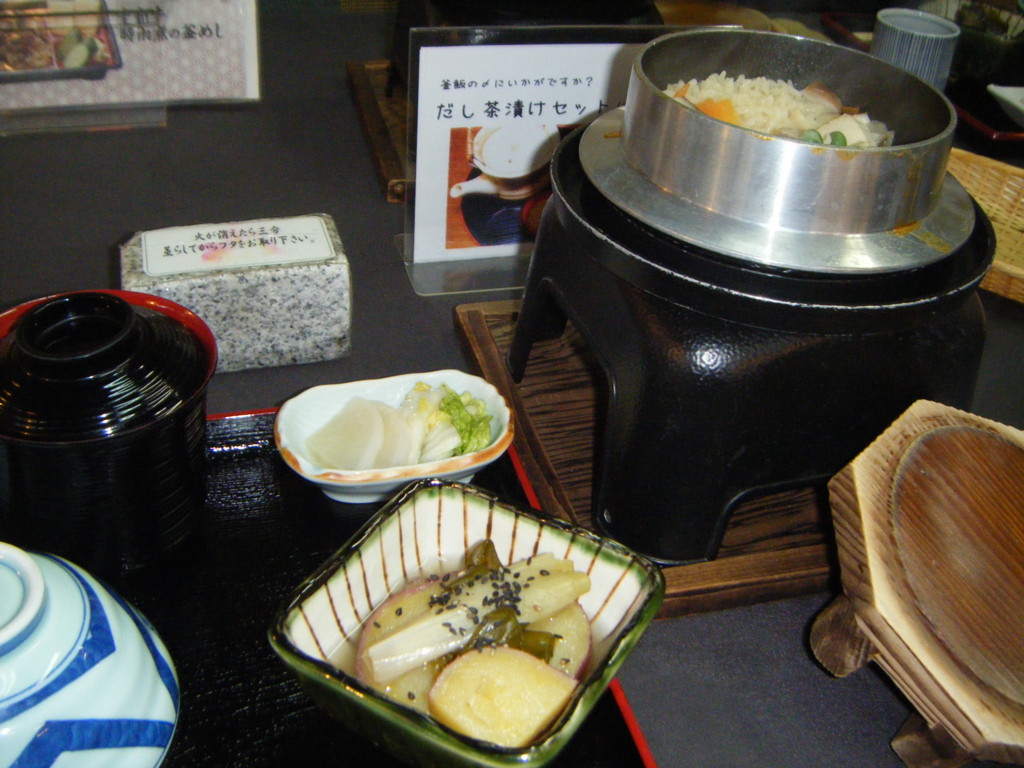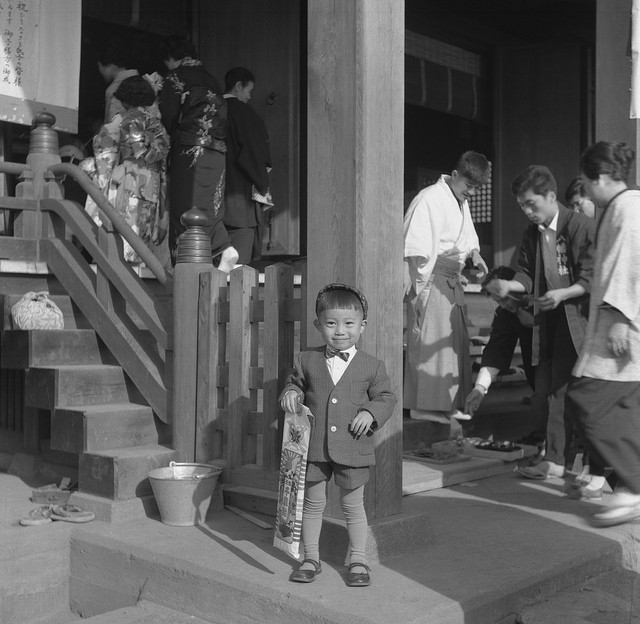Kimono Flea Market ICHIROYA's News Letter No.670

Hello, this is Mitsue. How are you? It is getting cooler and cooler, and we feel autumn sky which is clear and serene. But auntum sky is easy to change, so it is often compare to a woman's heart. Do you agree to it?
The other day, I enjoyed orange picking with friends in Taishicho. Actually orange means mandarine orange generally in Japan. Taishicho is located just about 30 min by car or train from our company. This year oranges are full harvest, and many kindergarten or nursery school children were enjoying on an excursion. After picking oranges, we visited Taima-dera and ate Kamameshi (boiled pot rice) for lunch. Taima-dera is famous for 'Botan'(peony) in spring, and the garden scenery is so beautiful. On the way home, we ate delicious zenzai (sweet red beans soup with mochi). It was so fun going outdoor with friend on a beautiful day. We go to orange picking every year in this season, and I hope to go there as possible as I can climb the hill. Training! training!

Mikan trees

The view of Tondabayashi from Mikan hill

Taoima dera temple

Kamameshi rice

Zenzai with mochi
Well, what do you imagine from the number of 7,5 and 3?
In Japan, 7-5-3(Shichi-go-san) is an annual event to celebrate healthy growth and wish longevity for three and seven-year-old girls, and three and five-year-old boys.
It is said the ceremony started in Muromachi era(1338-1573), and spread among samurai family and strong merchants in Edo era(1603-1867), and became common to people in Meiji era(1868-1912). It used to be celebrate on November 15th, but nowadays it is often celebrate on weekends or holidays in November.
Children usually dress up in kimono or hakama and go to shrines or temples to pray for their healthy growth and longevity with their parents. They also take commemorative pictures at a photo studio.
Three-year-old children have a ceremony called Kamioki, which means“to let down one's hair.” The children start to grow longer hair. In Edo era, there was a custom to shave children's hair until three years old.
Five-year-old sons have a ceremony called Hakamagi. Hakamagi means“ to wear hakama“. Hakama is a formal divided skirt worn by men. Boys start wearing hakama when they became five years old.
Seven-year-old daughters have a ceremony called Himo-otoshi or Obi-toki. Until the age of seven, girls use strings to tie their kimono, but they start to use obi.
On 7-5-3(Shichi-go-san), children eat Chitose Ame, thin and long red and white candies. They symbolize healthy growth and longevity.
Red and white are considered to auspicious colors in Japan.
Chitose Ame is in a big long bag with drawings of cranes and turtles as a symbol of longevity, or pine tree, bamboo and plum as symbols of auspice.
When I was a child, I wore kimono on 7-5-3 with my sister. Also I used to wear kimono on New Year's Day, and go for greetings to relatives with my family. It is a good memories of my childhood.
I found a cute photo of a boy holding chitoseame.
You cannot see the colors from this photo but children are holding long bag of chitoseame like this boy! (The photo is probably from the time when I was a little child!) Look at his happy face!

How about letting children wear kimono on New Year's Day?
ICHIROYA has lots of cute and charming kimono for boys and girls.
We hope children will enjoy wearing kimono on special days.
For 3 year's girl (7-5-3 set)
http://japan.ichiroya.com/item/list2/339078/
For 5 year's boy (7-5-3 set)
http://japan.ichiroya.com/item/list2/339081/
http://japan.ichiroya.com/item/list2/339083/
Vintage kimono for girls
http://japan.ichiroya.com/item/list2/345945/ (vibrant seasonal flowers)
http://japan.ichiroya.com/item/list2/344406/ (shell matching & flowers)
http://japan.ichiroya.com/item/list2/318434/ (flower cart & flower ball)
http://japan.ichiroya.com/item/list2/320840/ (large ume)
http://japan.ichiroya.com/item/list2/302012/ (butterfly, hand drum, flower)
http://japan.ichiroya.com/item/list2/334686/ (Japanese instrument, flower)
Kimono Vest for 3 year's girl-small girls look cute with those vest and kimono!
http://japan.ichiroya.com/item/list2/291150/
http://japan.ichiroya.com/item/list2/291151/
Vintage kimono for boys
http://japan.ichiroya.com/item/list2/345025/ (Kintaro & toy)
http://japan.ichiroya.com/item/list2/281208/ (horse race)
http://japan.ichiroya.com/item/list2/296946/ (treasure boat, summer)
http://japan.ichiroya.com/item/list2/283971/ (matsu & crane, hitoe)
As for boy's vintage kimono, mostly they have war pattern and some prominent flaws such as stains and patinas. I think most of them are not suitable for wearing. They are usually used for materials or collections.
Hope you enjoy our newsletter every week! Thank you for reading till the end.
Have a nice day!